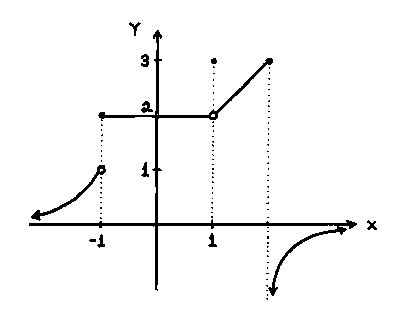Continuity is when you can draw a graph without lifting your pencil from the paper; it has no breaks in it.

Discontinuity is when there are breaks in the graph and cannot be drawn without lifting your pencil from the paper.

2) What is a limit? When does a limit exist? When does a limit not exist? What is the difference between a limit and a value?
A limit is the intended height of a function. A limit exists when the value of the limit is the same from both the left side and the right side like it does in the function in the left below at x equals 1. A limit does not exist when the value of the left side and the right side are different or cannot be reached like in the function on the left below at x equals negative 1 or in the function in the right below at x equals 2. A limit is the intended height of a function while a value is the height the function actually reaches like in the function on the left below where the limit at x equals 1 is 2 but the value is actually 3.


3) How do we evaluate limits numerically, graphically, and algebraically?
Numerically, we evaluate limits using a table by making our best guess what the limit would be if we used x values that are close to the limit we approach.

Graphically, we evaluate limits by checking from the left and the right what the limit is.
Algebraically, we evaluate limits by doing direct substitution, factoring, or rationalizing.